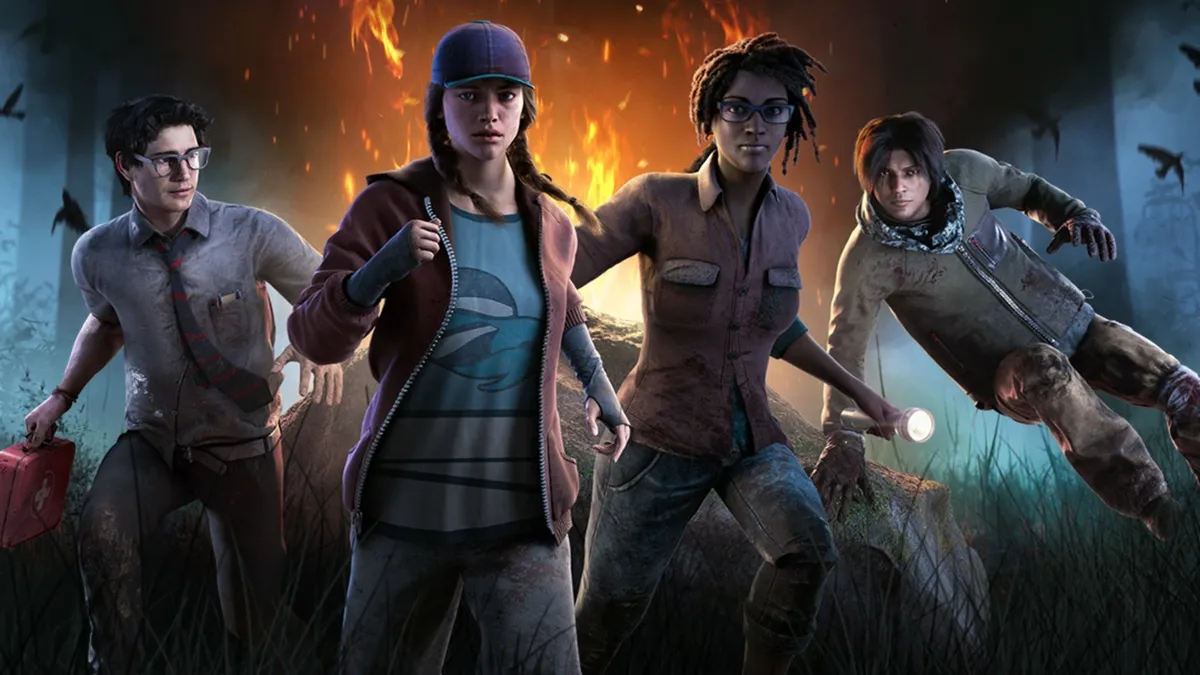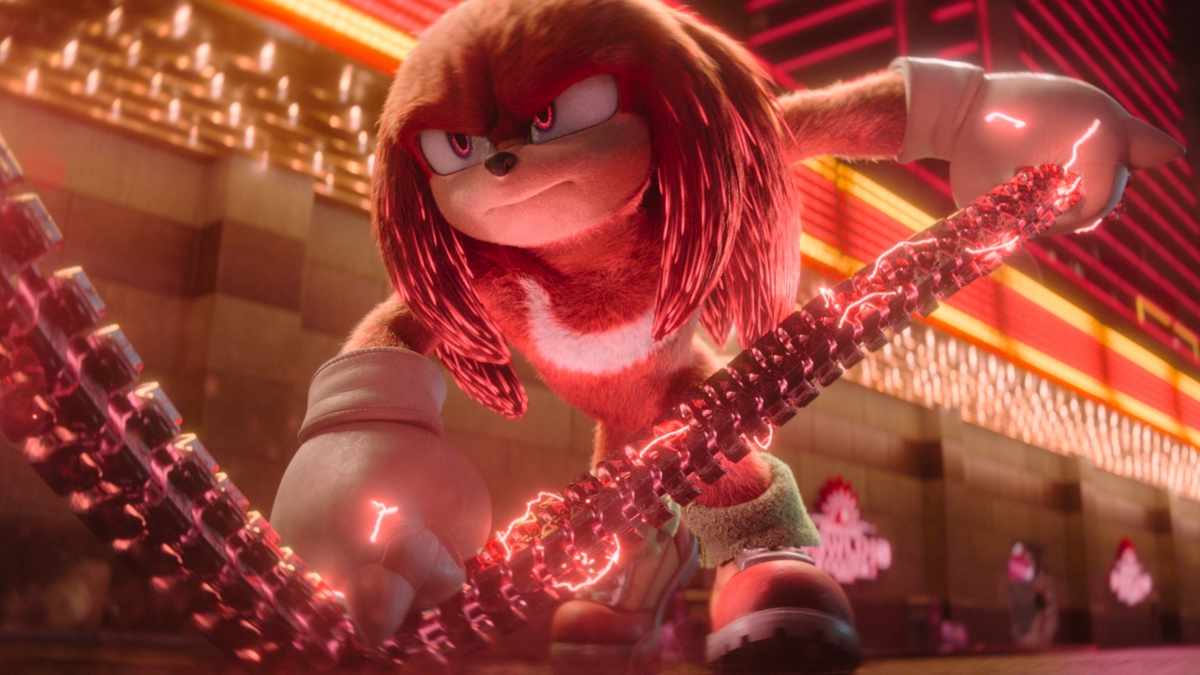
Danganronpa: Trigger Happy Havoc was a game that I had no prior knowledge of, which made me unsure of what to expect from it. Fortunately, the quirky murder mystery ended up being a very pleasant surprise. With its delightfully twisted premise, tense and gripping story, and a clever take on courtroom gameplay like the Ace Attorney series pioneered, the game ended up rocketing to the top of my favorite Vita exclusives.
My reaction seems to have been a common one, too, as NIS America, who handled the localization and American release of the Spike Chunsoft-developed game, almost immediately followed up its release with confirmation that the sequel would make its way to North America within the same year. Now, Danganronpa 2: Goodbye Despair is out, and the question many fans will probably have before jumping into it is how well it stands up compared to the original.
The answer is not as straightforward as one might expect. While I can certainly name some additions and decisions that didn’t gel with me as well as similar aspects in the first game, there are just as many new things that are a big upgrade. Overall, though, I think that Goodbye Despair is an extremely solid title that probably equals the original in quality when you balance its pros and cons, and I’ll explain why that is the case.
Much like its predecessor, the setup for the game revolves around a group of 16 high-schoolers accepted to the prestigious Hope’s Peak Academy. Our central protagonist is Hajime Hinata, who blacks out upon entering the school and wakes up with his fellow students in what appears to be a classroom. Things only get confusing when Usami, a talking plush rabbit, pops up, knocks down the room’s walls to reveal that the whole group is actually on the shore of the tropical Jabberwock island and promises the students that there is nothing to fear and a fun vacation awaits them all. However, it doesn’t take long before Monokuma, the twisted teddy bear, once again makes his presence known and establishes the same rules as last time: If any of the students want to leave Jabberwock Island and see civilization again, they’ll have to kill each other and get away with it.
From then on, the structure of the story and gameplay is basically identical to the original title. Hajime and company will initially spend some leisurely time together, with the player being able to choose who to spend time with and get to know better. When a corpse is inevitably discovered, the crime scene switches to an investigative mode, where players must search for evidence in classic point-and-click style (made easier by the Vita’s touch screen). All of that is then used in the intense class trials where all the students discuss, hypothesize, and argue about what they do know about each murder, and it’s up to Hajime and the player to point out contradictions and expand on correct theories with those items of evidence until the culprit is found.
To get some of the more notable negatives out of the way, in a game like this, it’s important for your cast to be well-developed or at least intriguing, and some of my first impressions had me worried that neither of those would be applicable. While Hajime successfully inherits the role of the reasonable straight man from the the first title’s Makoto, of his 15 non-playable allies, I’d say over half of them tend to mostly be one-note at best and obnoxious at worst. Trigger Happy Havoc certainly had some over-the-top and off-putting characters, but I recall them still feeling more believable. Some of the students here tend to have only one defining characteristic or running joke, and as a result, even some of the more well-meaning ones started to grate on me after a certain point.
Another unfortunate downgrade in terms of writing is some of the humor. To put it bluntly, it gets a lot more crass at certain points. One of the female students repeatedly falls at completely random points to provide panty shots, one of the male students’ main trademarks is constant come-ons and sexual entendres, and we even get a parade of some of the girls in swimsuits (though that part leads to a genuinely funny punchline). Even one of the climactic final confrontations gets briefly sidetracked by a tangent about breasts. I’m not going to pretend that the original Danganronpa had nothing of this sort, but there was definitely a lot less of it, and what was there certainly felt less blatant and exploitative. Also, considering the dark and often tragic nature of the story, things like this often feel out of place as far as tone goes.

But now it’s time for the positives, and there are quite a few. While there’s nothing that makes the cheap sex jokes justifiable, the revelations discovered during the trials (and even sometimes outside of them) really do help enrich the cast. By the halfway point, I felt that many of the characters who were coming off as annoyingly one-note had either been taken out of the equation altogether as murder victims or culprits. Conversely, there were others who had their personalities noticeably enriched through confessions they made during trials or other plot twists related to them. As the number of survivors dwindled, those who were left did a good job of displaying emotions and motivations beyond their initial gimmicks, and by the end, even my least favorite of the remaining cast had more redeeming qualities than when I first encountered them.
Monokuma was one of my favorite characters in the first game, and thankfully, he hasn’t lost his lovably twisted touch. His continuous glee, sarcasm, and ability to mess with everyone just because he feels like it continues to be very entertaining. The addition of Monomi, who has the exact opposite moral compass and is on a never-ending but futile quest to sway him into being compassionate and caring, also worked better than I was expecting.
The most satisfying improvement Goodbye Despair has in terms of writing is the numerous twists and turns during each trial, and even outside some of them. To elaborate on a previous point, the original Danganronpa generally kept the big surprises and interesting turns related solely to the culprit of each murder, and occasionally the victim as well. This time around, the writers made a smart move and threw some major curveballs in regarding those who weren’t either of those. As mentioned, it helps to flesh out some of the characters who stick around, and often in unexpected ways. The trials themselves are as gripping as ever, and pack some real emotional gut punches. In fact, one particular culprit discovery is my personal pick for the most heartbreaking moment in the series so far.
In terms of gameplay, the exploration portion is basically unchanged from the title’s predecessor, and re-uses a lot of the best ideas from it. The includes the ability to press the triangle button and briefly highlight every object and character that can be interacted with in an environment, being unable to leave a room until you’ve found every relevant clue, and the ability to use the Vita’s touch screen to choose objects faster than with the analog-based cursor.
One of the more useful refinements comes from the way the game handles the results of Hajime bonding with the other characters in the Free Time mode before each murder and resulting trial. The original game would reward you with equipable skills that could unlock perks and extra abilities in the trials, like a larger health bar or a steadier aim with the cursor, but the downside was that you had to go through every conversation with a specific character to get a skill, and the game never provided any way for you to know which one you would get ahead of time.
Goodbye Despair makes things a lot more convenient by rewarding you with an item called a Hope Fragment for every successful interaction, which can be saved up and spent on skills. This means that you can aim to get whichever skill you think will benefit you most instead of leaving it up to chance like before, which is a major plus. The only quibble I have about this system is the fact that I don’t recall the game ever actually explaining how to access its list of skills. For those who run into the same problem while playing, it can be found in the pause menu’s option that displays the roster of students, under an icon of Monomi.

The basics of the trials’ gameplay are still the same, with a few minor enhancements, like the ability to agree with specific statements rather than only being able to contradict them. Where I do think things falter a bit is in the new mini-games that trigger at specific points and represent Hajime mentally putting together important clues and theories. My least favorite by far would be Hangman’s Gambit, where letters slowly fly in straight lines across the screen, and players have to grab and combine two of the same letter and gradually spell out an important clue in the proper order. The first several instances of this are slow and drawn-out to the point of tedium, while the last few abruptly ramp up the amount of letters onscreen to the point of confusion and inevitable damage to your health meter when some of them collide. It doesn’t help that, despite the option to use the touch screen for quicker targeting and input, there’s a noticeable delay as the cursor moves across the screen to catch up with the point you touch, sometimes resulting in further frustration.
This time around, other characters also have the ability to initiate one-on-one arguments with Hajime when they disagree with one of his statements. In these, you must typically slash repeatedly across the screen to get their statements out of the way and then repeat the same mechanic from the normal trials of countering a specific statement with a corresponding piece of evidence. This mini-game is clever in theory, but often a bit frenetic and confusing in how it’s presented. If a third game is ever made, I would like to see this concept return, but hopefully in a streamlined manner that’s more intuitive.
The only new trial mini-game I’d give a thumbs-up to is Logic Dive, which has players control Hajime as he surfs through a neon-tinged tunnel where he has to alternate between jumping over gaps, avoiding obstacles, and steering into a specific branching path at key points, in order to pick the correct answer from several theories. I had fun with this one due to the controls and presentation being less frustrating and unclear, though it could also feel a bit drawn out at times.
The returning trial mini-games include a mode where players have to put together manga-styled panels in the correct order to detail the path of events leading to each murder, and while that was one of my least favorites in the first game, it’s a bit easier to swallow this time around thanks to the inclusion of descriptive hints whenever you highlight both the empty panels in need of a corresponding picture as well as your inventory of panels to place. Unfortunately, another mini-game typically saved for the end of a case, a rhythm scenario where you must tap buttons to the beat of the background music to get through to someone denying a murder charge, ends up worse than before, as the screen can get distractingly cluttered and the game’s judgement on how well-timed my button taps were always seemed very off.
Finally, those who played Trigger Happy Havoc to completion may think they have a basic idea of what to expect from Goodbye Despair‘s climax and wrap-up, but without giving anything away, I can guarantee that almost no one will see this game’s final act coming. From the moment the last chapter starts, you are thrown a constant stream of major twists and concepts that are completely new to the series, culminating in the most insane setups and imagery either game has ever presented. This final barrage of craziness is so nonstop that, in its latter stages, it’s actually kind of mentally exhausting, and its unabashedly bizarre nature is so bold that I have a feeling the overall reception to it may be kind of mixed.
That said, there is no denying that the final playable moments of Goodbye Despair are genuinely fantastic. Much like how the very end of the first game took some of its established gameplay mechanics and put a unique spin on them to match its story’s themes, this takes things to the next level, taking full advantage of the outlandish ideas and important themes that are introduced and merging them together in a manner that is ultimately very effective.

It’s also worth noting that for newcomers wondering how necessary it is to play Trigger Happy Havoc before jumping into this game, I would definitely recommend it. Despite Goodbye Despair boasting a different cast and setting, a lot of the later reveals will have a lesser impact on those unfamiliar with the events of that game.
The graphical presentation is essentially identical to the first game, with polygonal environments and static 2D character sprites that switch to different poses and expressions depending on each character’s emotions and reactions. More detailed illustrations are also used for key plot points, as well as some of the more unnecessary fan-service-based moments mentioned earlier. Full voice acting is typically reserved for the unique illustrations and trials, with the English cast doing a great job overall, though the Japanese voice option is still there for those who prefer it. The only proper animations are used for Monokuma’s outlandish executions of each victim, which manage to top the first game in terms of pure zaniness.
While this graphical approach is still acceptable to me, especially considering that this is a remaster of a 2012 Japan-only PSP title, I still hope that if a third entry is made with higher-spec systems like the Vita in mind, we’ll get a little more in terms of actual motions for the characters. At the very least, it would be nice if their mouths moved while delivering dialog.
To sum things up, Danganronpa 2: Goodbye Despair does certain things with its writing and gameplay that don’t live up to its predecessor, but at the same time, it does other things in those same areas that are fantastic. While the final product is consequently a more uneven experience, its major highs ultimately make it as good as its predecessor as a whole. If you enjoyed Trigger Happy Havoc earlier this year, playing this follow-up is a no-brainer.
This review is based on the PS Vita exclusive, which was provided to us.






